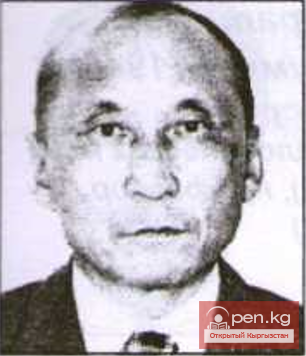
The Aksu mineral water deposit is the most intensively exploited deposit of therapeutic table carbonated water in the republic. It is located 30 km south of the village of Belovodskoye in the Moscow district, in the valley of the Jartash River — a right tributary of the upper Aksu River. The absolute elevation at the mineral water outcrop sites is close to 2300 m. A good road accessible to all types of transport leads to the deposit, which was previously manifested by two groups (lower and upper) of springs and is now opened by the same two groups of wells.
The Aksu deposit is among the well-studied and widely covered in specialized literature. The springs in the Jartash River valley were first described in 1936 by O. I. Sergunkova, re-examined in 1949 by hydrogeologists E. N. Belyaeva and E. N. Boretzkaya, and initially named Jartash at the suggestion of research associate V. K. Kadyrov from the Academy of Sciences of the Kirghiz SSR. With the organization of industrial bottling of the therapeutic table water "Ak-Suu" (named after the main river in the area), the original name gradually became forgotten.
The study of the Aksu deposit through wells began in the mid-1950s. And here occurred what can only be called a misfortune — laboratory analyses revealed an unacceptable level of lead (more than 0.1 mg/l) in the water for drinking. Despite the significant amount of water obtained from the wells, which was otherwise quite suitable for consumption, lead became a decisive obstacle to the exploitation of the deposit.
However, subsequent repeated thorough testing at different times of the year showed that there are no restrictions for drinking use of Aksu mineral water, and it began to be bottled at the Belovodsk brewery. Today, the composition of this water is systematically analyzed by the operational service of the deposit, and each analysis undoubtedly confirms its excellent quality.
The reason for the earlier detection of "excess" lead remains unsolved, but many specialists suggest that it was an analytical error.
One of the features of the deposit is the fact that the level of water mineralization and the content of CO2 in the springs and wells at various depths are the same: about 1 g/l and up to 1.5—2.5 g/l, respectively; the water composition is consistently bicarbonate magnesium-calcium with increased iron content, similar to the composition of the mineral water of the Darasun resort (Chita region), bottled as type IVa water according to GOST 13 273—73.
Spectral analysis of the dry residue of the water revealed the presence of a large group of elements (nickel, chromium, lithium, barium, lead, copper, etc.), some of which are toxic, but since they are present in amounts much lower than the MPC (maximum permissible concentrations), their presence not only does not hinder therapeutic table consumption but may even enhance its therapeutic effect.
The reserves of mineral waters in the deposit, approved by the State Commission on Mineral Resources in industrial categories, amount to almost 250 m3/day, fully satisfying the current and likely future demand for this water in the foreseeable future.















































